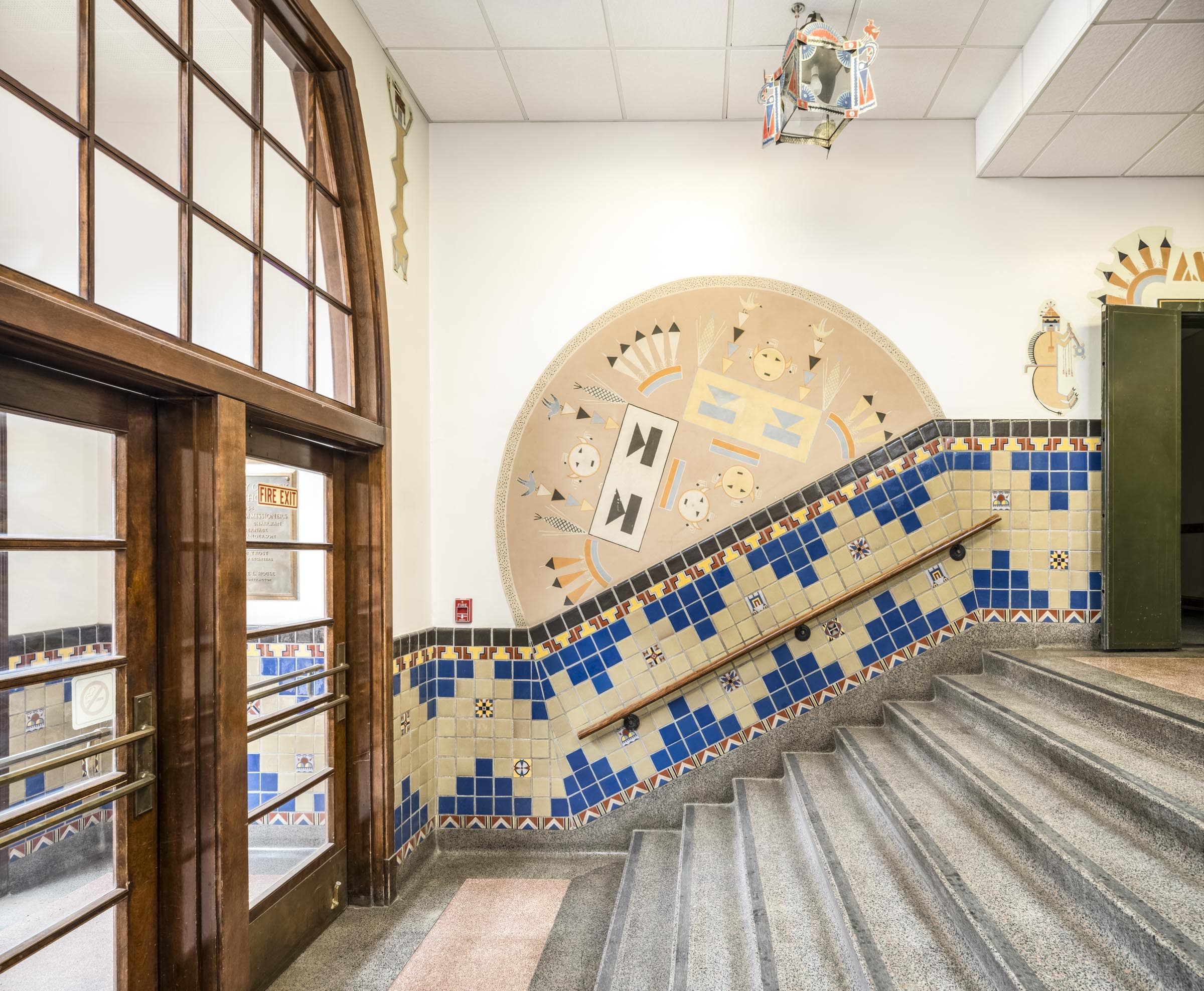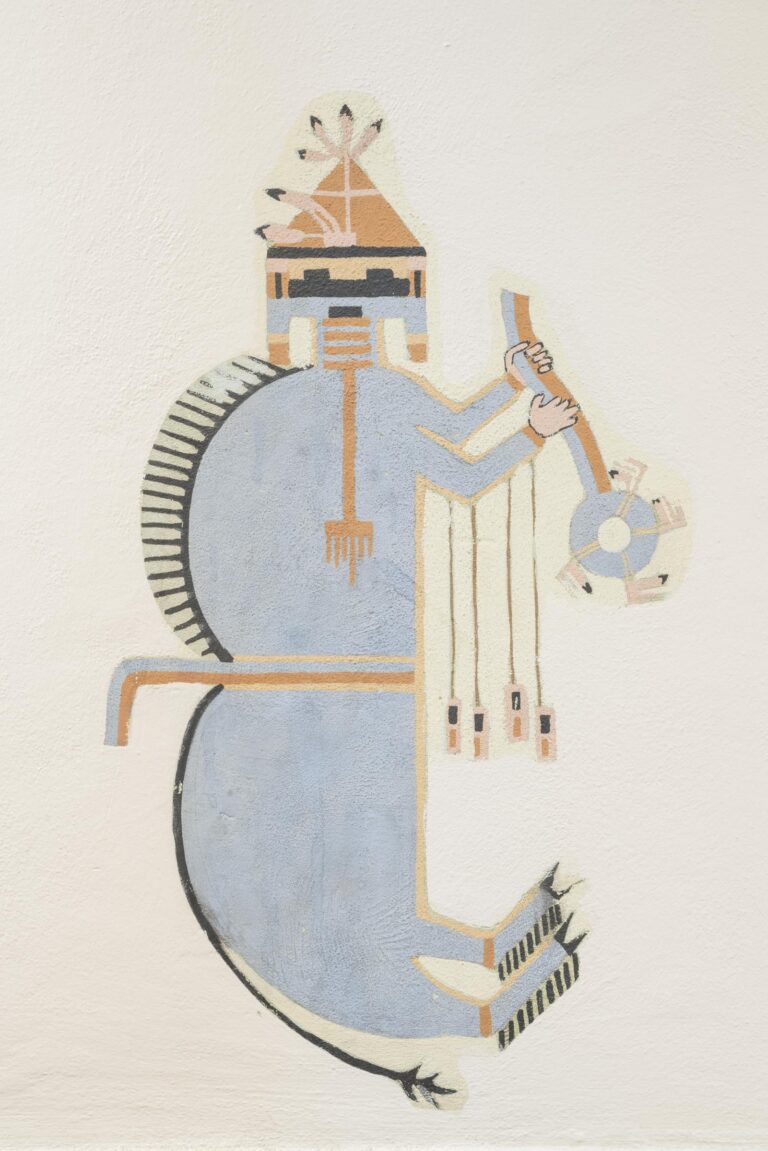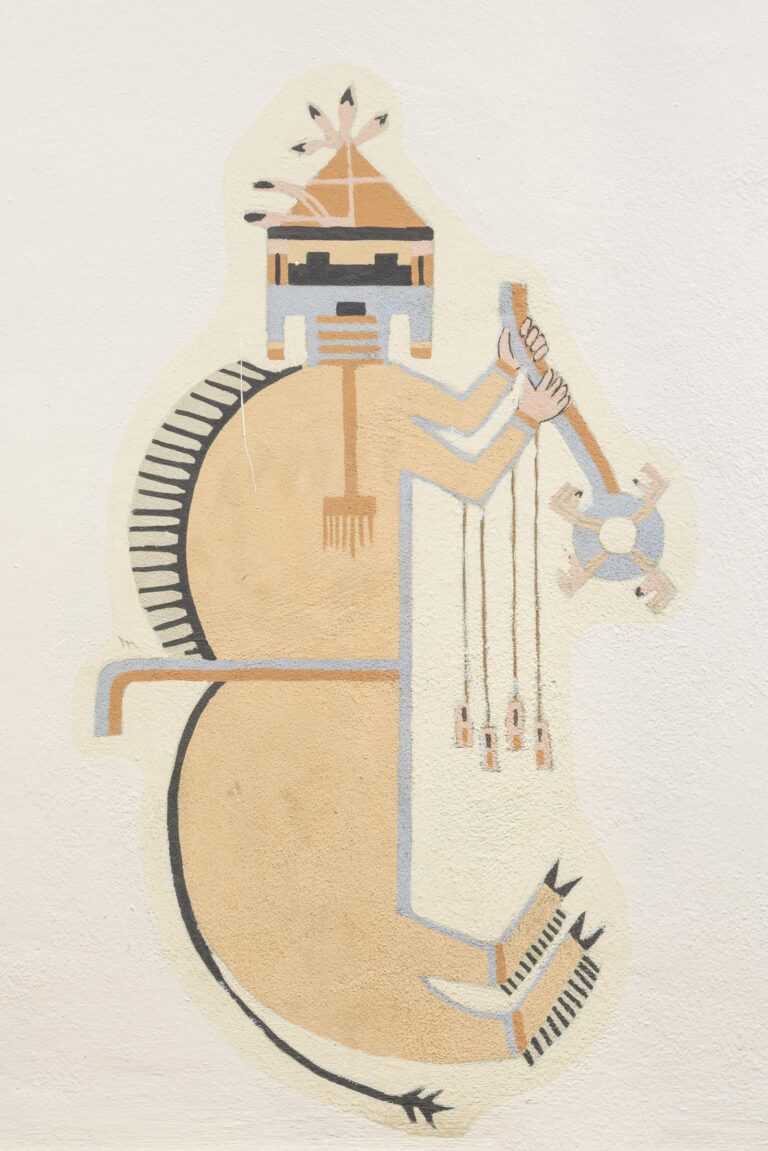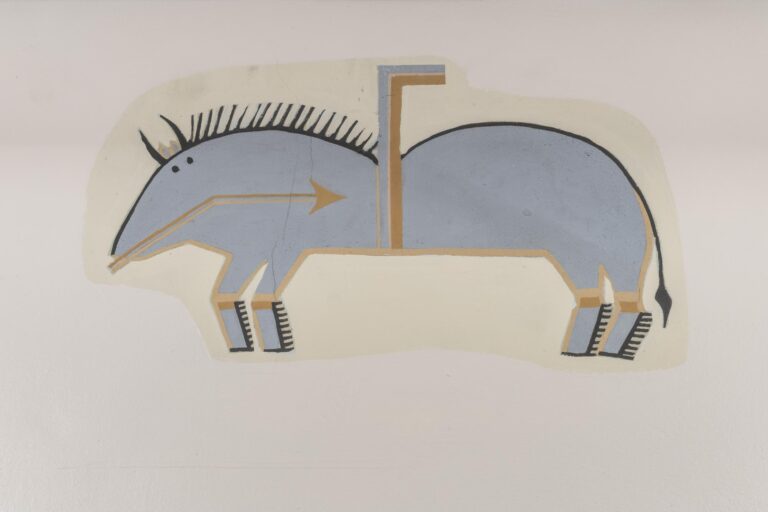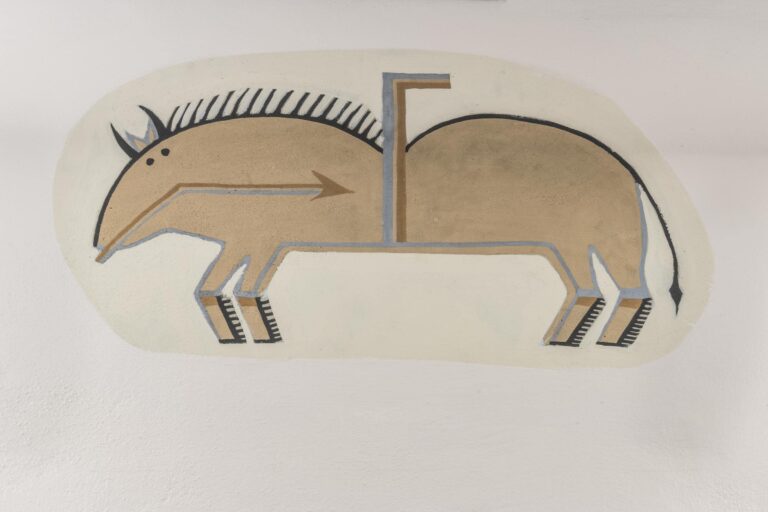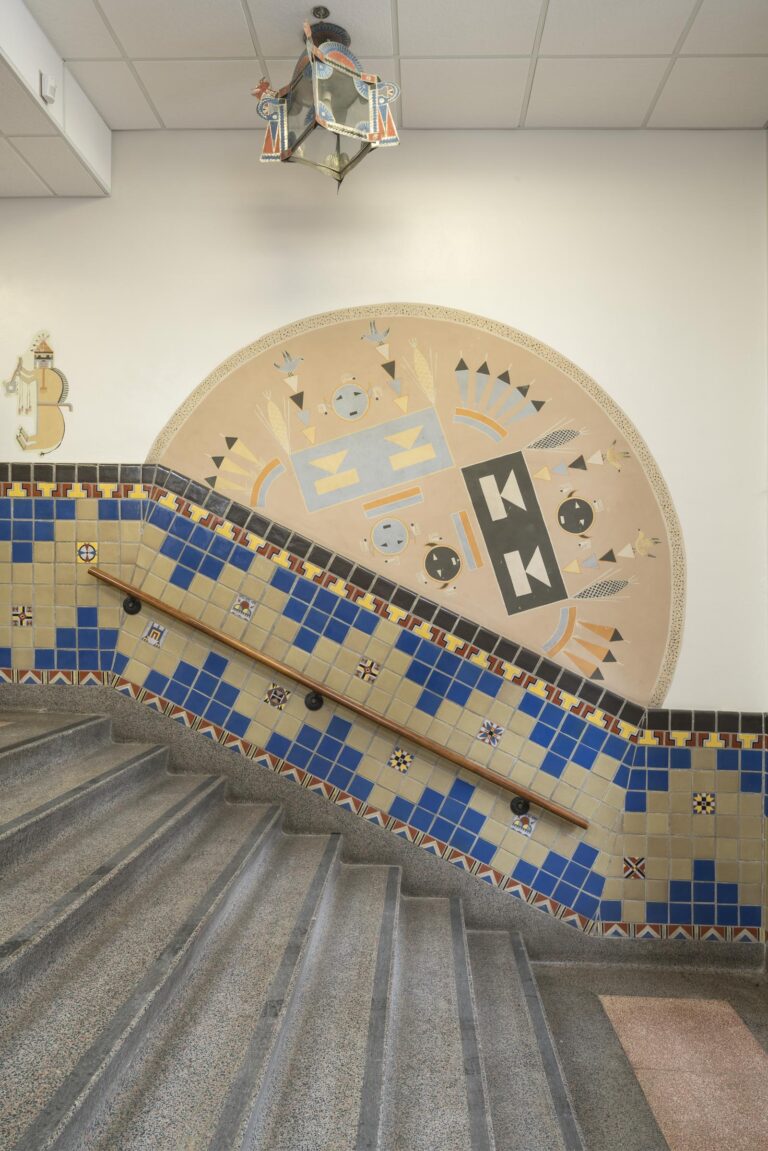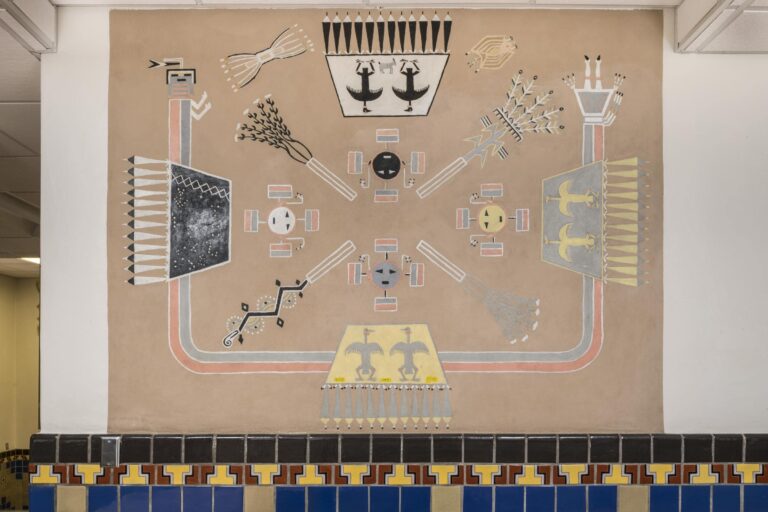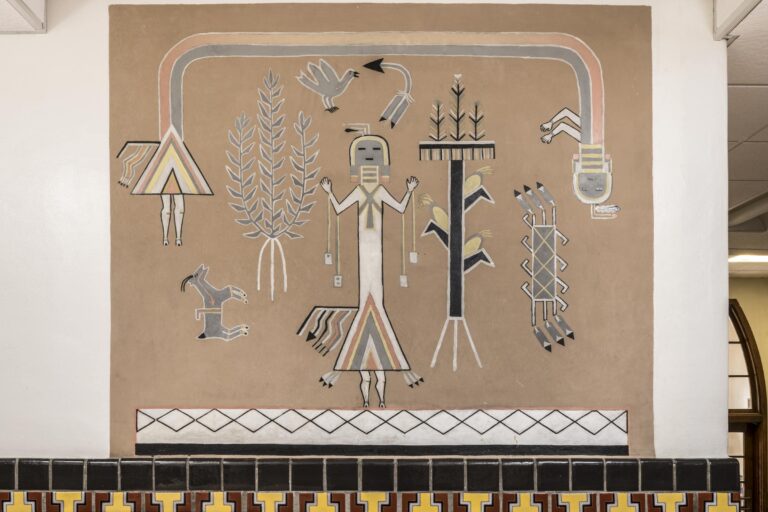This wall painting is one of sixteen Diné (Navajo) sandpainting-style murals decorating the first-floor lobby of the historic McKinley County Courthouse. It was reportedly painted by “a young Navajo painter”1in 1939, the year the New Deal building opened. It is the companion piece to a semicircular mural painted on the wall opposite it (the murals are painted on either side of the building’s entryway staircase). Together, the two murals form a circular composition that references the four cardinal directions, represented by the circles and rectangles colored white and yellow (seen here) and blue and black (seen in the companion piece). The four directions are sacred to the Diné (Navajo) people because the Diné homeland is delineated by northern, southern, eastern, and western mountains (as seen in the Navajo Nation flag).
It is not only this mural and its counterpart that are painted in pairs. Throughout the entire first floor of the courthouse, sandpainting-style wall paintings are composed in sets. Moreover, the artist intentionally placed sandpainting designs and figures so that they flank entrances, lobbies, and passageways, with most symbolically communicating messages of guardianship and blessing. Here, the semicircular mural includes four songbirds, perhaps bluebirds and orioles, which traditionally symbolize good fortune (generally speaking). In this manner, the artist wrapped the entire space in a protective embrace.

